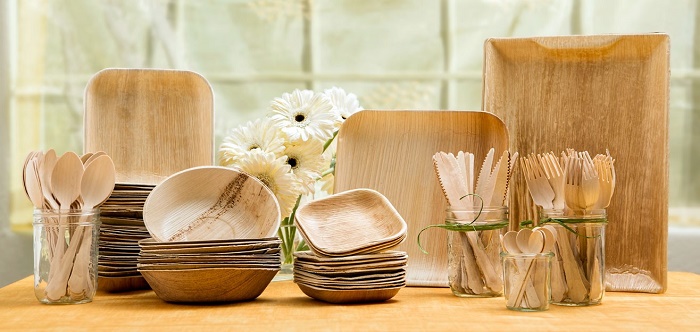As more and more people come to realize the reality of pollution and global warming, they are starting to look for ways how to leave a smaller carbon footprint behind them. And this can mean all sorts of things – from recycling, to boycotting the food chains that serve food in disposable plates and containers. Disposables are bad for the environment because they usually are made of materials such as plastic or Styrofoam, which can take around hundreds of years to decompose.
Luckily, thanks to the ingenuity of modern production methods, disposable plates can now be made from a number of compostable and biodegradable materials. So, if you’re running a sandwich stand, a takeaway restaurant, or a coffee shop, these eco-friendly disposable plates can help you retain that part of your loyal customer base that wants to stick to green products.
Bamboo Plates
Bamboo is a fast growing plant which makes it easily renewable and thus the material of choice for many environmentally-friendly products, ranging from furniture to, you’ve guessed it – disposable plates. The fact that they are made of a natural material, means bamboo plates are also biodegradable and compostable. The fibers in bamboo are very tough, which results in strong, and durable plates which can be used with extremely hot food. What’s more, bamboo is not made with any harsh chemicals or dyes and has natural antibacterial properties, which makes it absolutely the best choice when food is concerned. Beside its eco-friendly character, many takeaway businesses opt for bamboo flatware due to its elegant, raw look.
Sugar Cane / Bagasse Plates
You might be eating out of a bagasse plate and not even know it’s one. The material is that good at mimicking the look of traditional Styrofoam plates. Bagasse is in fact the by-product of the sugar cane fibre that’s left after the juice is extracted from the sugar cane. Plates made of bagasse are extremely heat-tolerant and are safe to use for reheating or microwaving food. Compared to bamboo plates, sugar cane plates are considered more economical.
Plates Made of Palm Tree Leaves
One of the most unusual material for plates are the leaves from the Arecaceae tree – a type of palm tree growing in tropical locations. Local people collect the fallen leaves and later grind them into pulp which is used to make a type of thin but strong fibreboard. The production method consists of simple, handheld tools and does not pollute the air, water, or soil. These products are very popular with environmentalists as they decompose quickly after they have been used and also help support the local economy.




